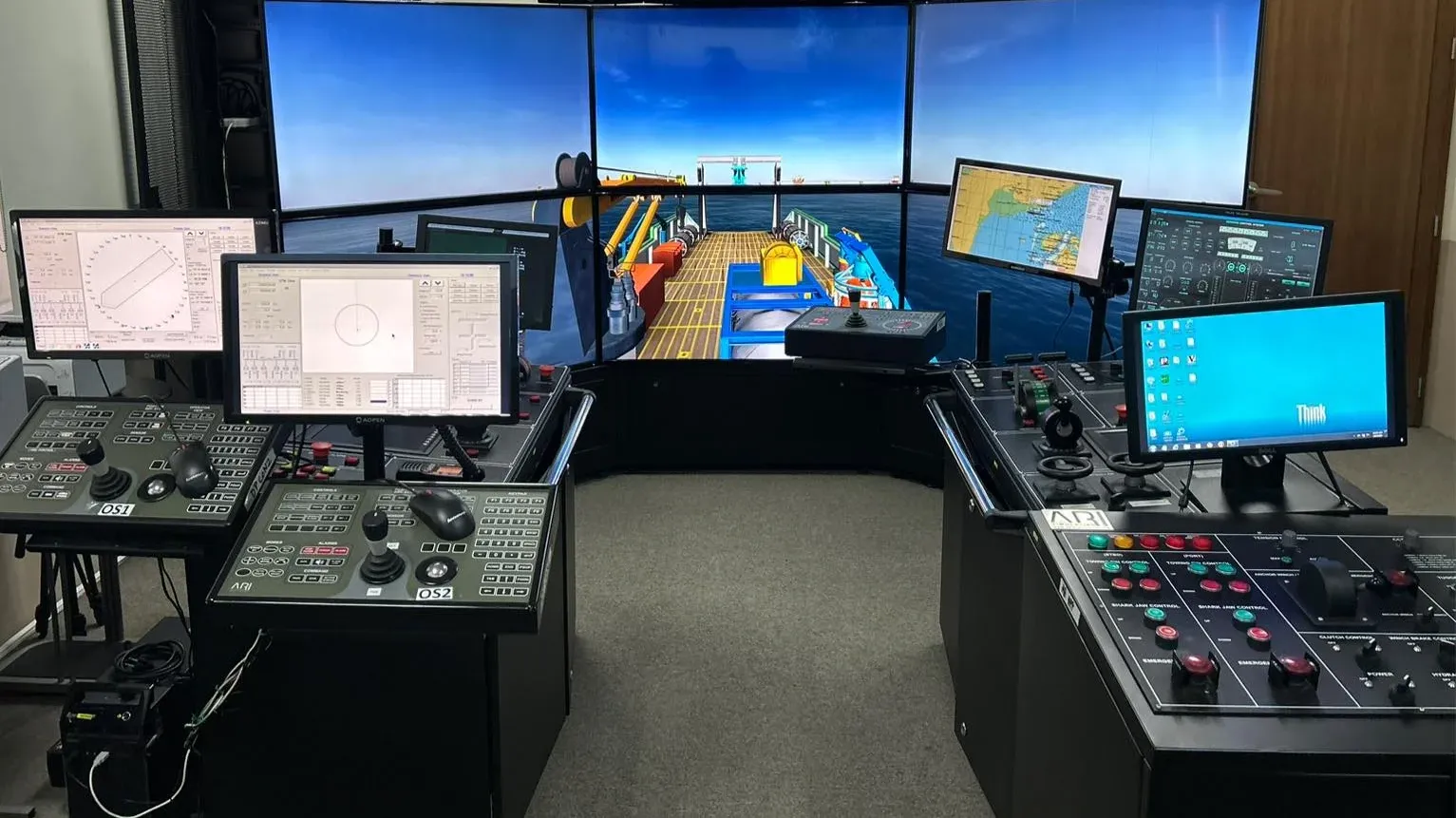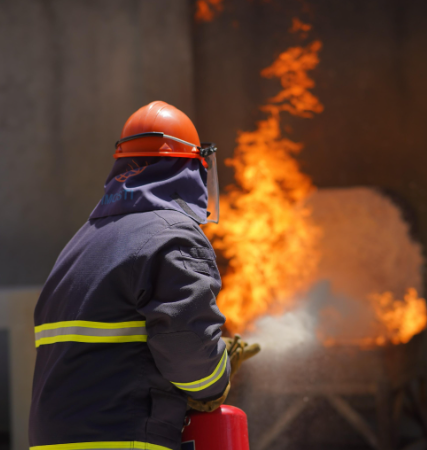OPITO & NAUTICAL INSTITUTE PRODUCTS
OPITO & NAUTICAL INSTITUTE PRODUCTS

BOSIET with EBS
The BOSIET with EBS (Basic Offshore Safety Induction and Emergency Training with Emergency Breathing System) is a crucial course for offshore personnel. It aims to equip learners with essential safety and emergency response skills needed for offshore environments.
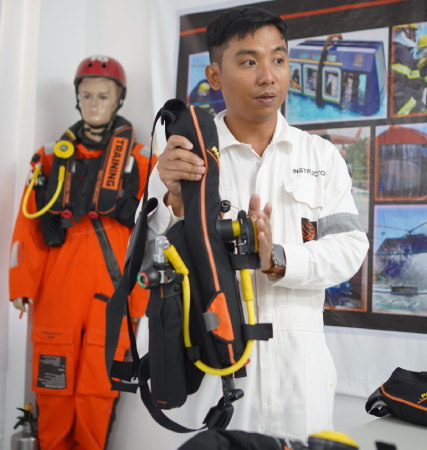
BOSIET with CA-EBS
The Basic Offshore Safety Induction and Emergency Training (BOSIET) with Compressed Air Emergency Breathing System (CA-EBS) course aims to provide offshore personnel with the essential safety skills and knowledge to work and respond effectively in an offshore environment.
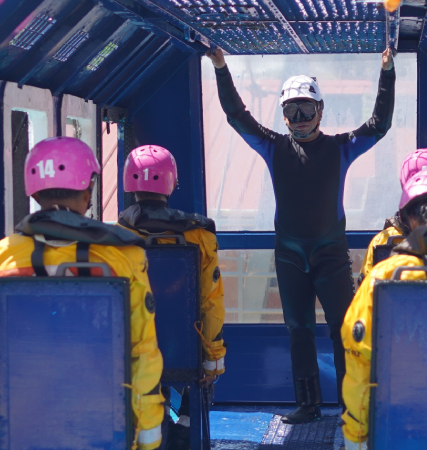
BOSIET with EBS and TSbB
The objective of the BOSIET with Emergency Breathing System (EBS) and Travel Safely by Boat (TSbB) course is to equip personnel with essential safety knowledge and practical skills required for working in an offshore environment. This training aims to ensure the safety of individuals by preparing them to respond effectively in emergencies, especially in helicopter transit and marine transport situations.
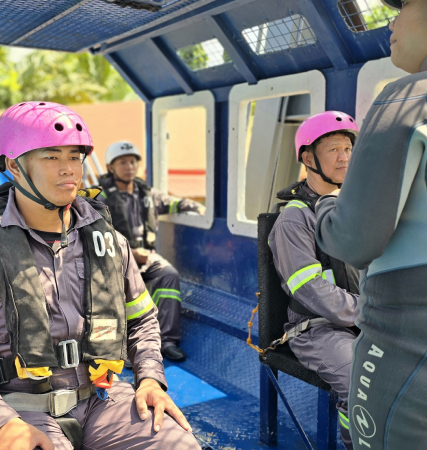
T-BOSIET
The Tropical Basic Offshore Safety Induction and Emergency Training (T-BOSIET) course is designed to prepare individuals for offshore work, with a focus on tropical environments.

T-BOSIET with EBS
The Tropical Basic Offshore Safety Induction and Emergency Training (T-BOSIET) with Emergency Breathing System (EBS) course has several key objectives designed to prepare personnel for working in tropical offshore environments.
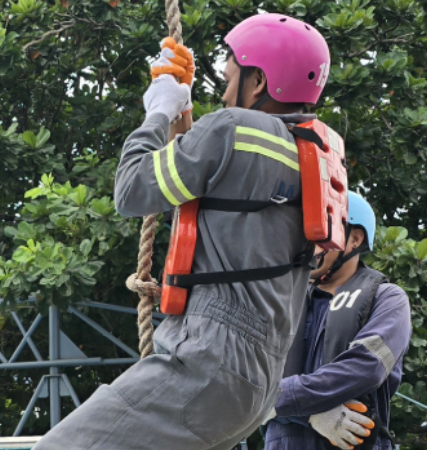
T-BOSIET with EBS and TSbB
The Tropical Basic Offshore Safety Induction and Emergency Training (T-BOSIET) with Emergency Breathing System (EBS) and Travel Safety by Boat (TSbB) course has several key objectives designed to prepare personnel for working in tropical offshore environments.
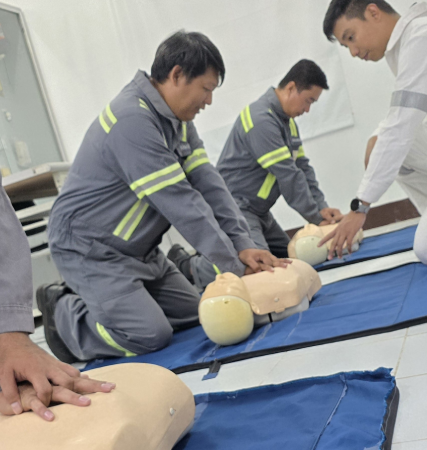
T-BOSIET with CA-EBS
The objective of the Tropical Basic Offshore Safety Induction and Emergency Training (T-BOSIET) with Compressed Air Emergency Breathing System (CA-EBS) is to provide personnel working in offshore tropical environments with the necessary knowledge and skills to respond effectively in emergency situations. The course focuses on safety induction, survival techniques, and the use of emergency equipment, with specific emphasis on CA-EBS.
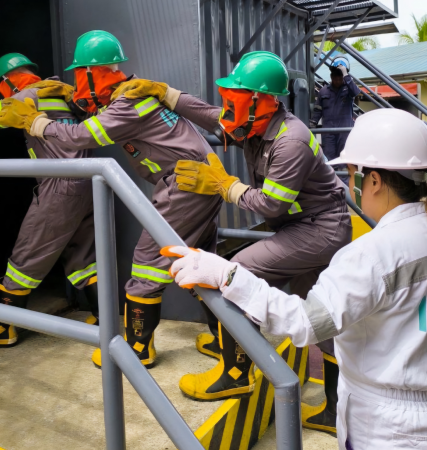
FOET with EBS
The FOET with EBS (Further Offshore Emergency Training with Emergency Breathing System) course is a refresher program for offshore personnel who have already completed their BOSIET training. The course is designed to reinforce and update essential safety skills and emergency response procedures.
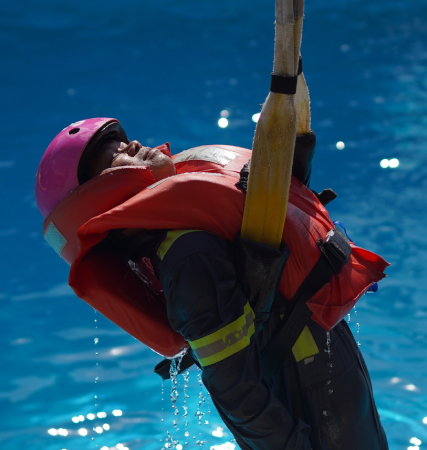
FOET with CA-EBS
The Further Offshore Emergency Training (FOET) with Compressed Air Emergency Breathing System (CA-EBS) course is designed to provide refresher training for personnel working in the offshore oil and gas industry.
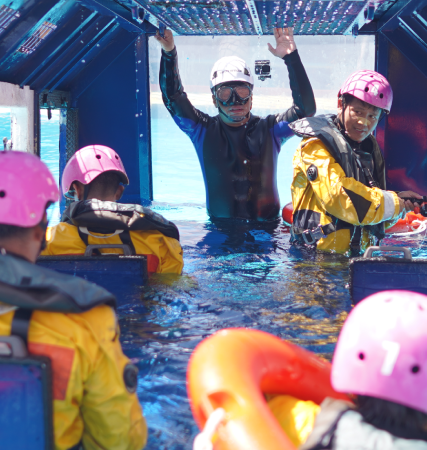
FOET with EBS and Travel Safety by Boat
The FOET with EBS and TSbB (Further Offshore Emergency Training with Emergency Breathing System and Travel Safety by Boat) course is a refresher program for offshore personnel who have already completed their BOSIET training. The course is designed to reinforce and update essential safety skills and emergency response procedures.
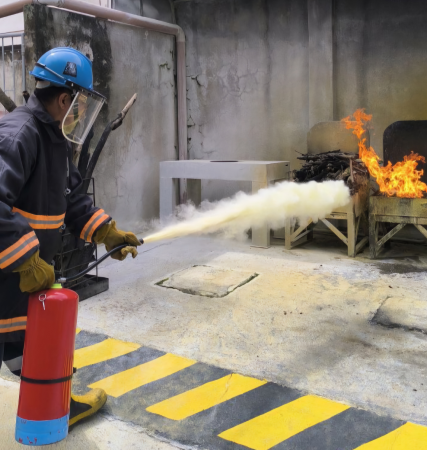
T-FOET
The Tropical Further Offshore Emergency Training (T-FOET) course is designed for personnel working in tropical offshore environments who need to refresh and update their knowledge and skills in emergency response.
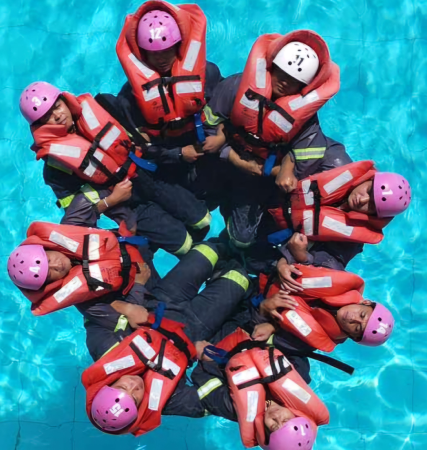
T-FOET with EBS
The Tropical Further Offshore Emergency Training (T-FOET) with Emergency Breathing System (EBS) course has several key objectives aimed at ensuring that offshore personnel can respond effectively to emergency situations in tropical environments.

T-FOET with EBS and TSbB
The Tropical Further Offshore Emergency Training (T-FOET) with Emergency Breathing System (EBS) and Travel Safety by Boat (TSbB) course has several key objectives aimed at ensuring that offshore personnel can respond effectively to emergency situations in tropical environments.
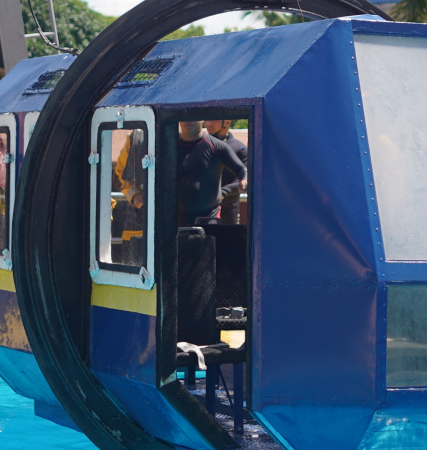
T-FOET with CA-EBS
The objective of the T-FOET (Further Offshore Emergency Training) with CA-EBS (Compressed Air Emergency Breathing System) course is to refresh and update offshore workers' skills and knowledge to safely respond to emergencies in offshore environments.
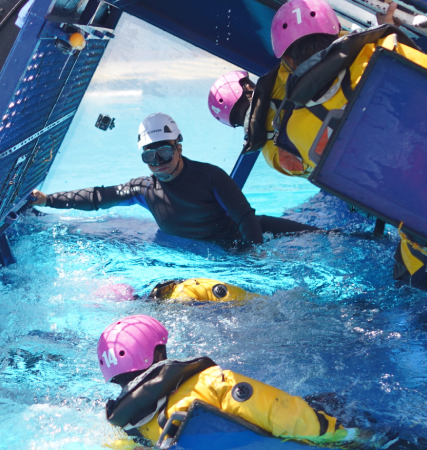
HUET with EBS
Objectives: The objectives of the Helicopter Underwater Escape Training (HUET) with Emergency Breathing System (EBS) course are typically focused on enhancing the safety and preparedness of personnel working in offshore environments.
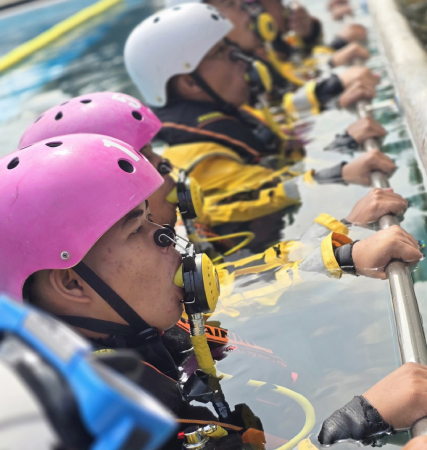
HUET with CA-EBS
Objectives: The HUET (Helicopter Underwater Escape Training) with CA-EBS (Compressed Air Emergency Breathing System) course is designed to prepare personnel for emergency situations when traveling to offshore locations by helicopter.
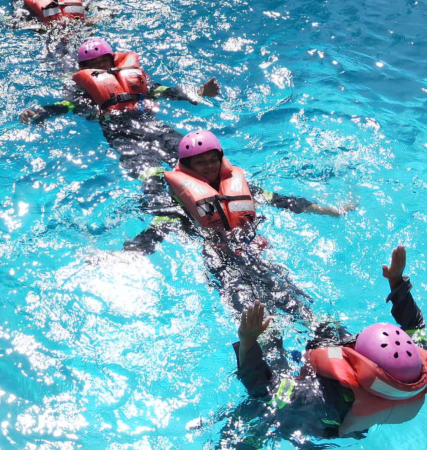
T-HUET
The Tropical Helicopter Underwater Escape Training (T-HUET) course is designed to prepare offshore personnel for emergencies while traveling by helicopter to and from offshore installations in a tropical environment.
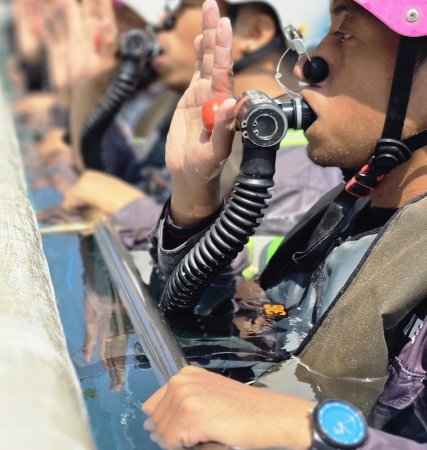
T-HUET with EBS
The T-HUET (Tropical Helicopter Underwater Escape Training) with EBS (Emergency Breathing System) course aims to equip offshore personnel with the necessary skills and knowledge to safely escape from a helicopter in the event of an emergency landing in water.
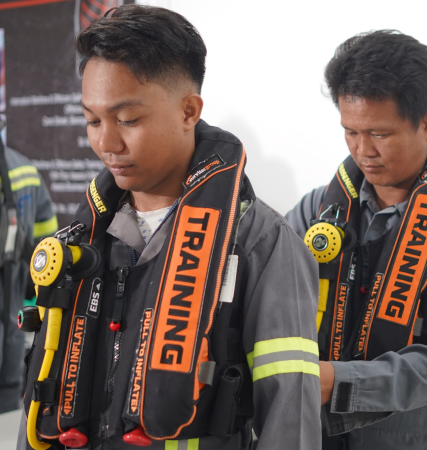
T-HUET with CA-EBS
The Tropical Helicopter Underwater Escape Training (T-HUET) with Compressed Air Emergency Breathing System (CA-EBS) course is designed to equip offshore workers with essential survival skills in case of a helicopter emergency over water.
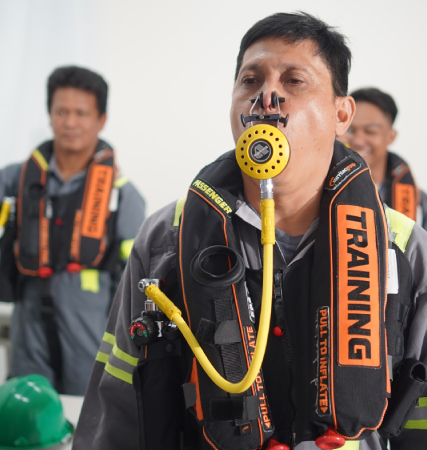
Dry CA-EBS Initial Deployment
The objective of the Dry Compressed Air Emergency Breathing System (Dry CA-EBS) course is to equip participants with the knowledge and skills to effectively use a Dry CA-EBS in the event of an emergency.
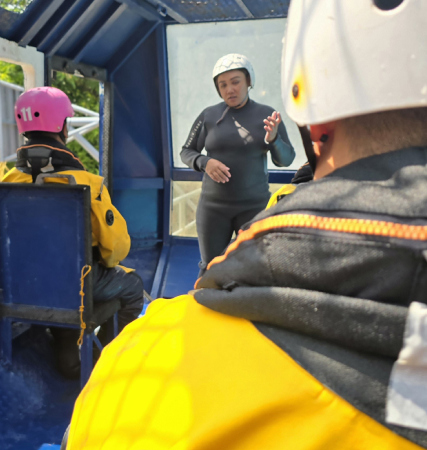
Shallow Water CA-EBS
The objective of the Shallow Water Compressed Air Emergency Breathing System (CA-EBS) course is to equip participants with the knowledge and skills to effectively use a Dry CA-EBS in the event of an emergency.
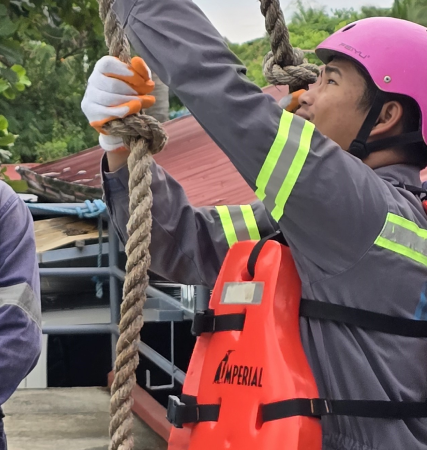
Travel Safety by Boat (TSbB) Initial Training
The objective of a TSbB (Travel Safely by Boat) course is to provide participants with the necessary knowledge and skills to travel safely to and from offshore installations by boat.
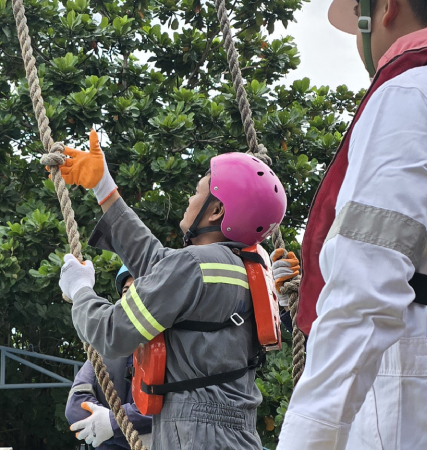
Travel Safety by Boat (TSbB) Further Training
The objective of a TSbB (Travel Safely by Boat) Further Course is to reinforce participants with the updated knowledge and skills to travel safely to and from offshore installations by boat.
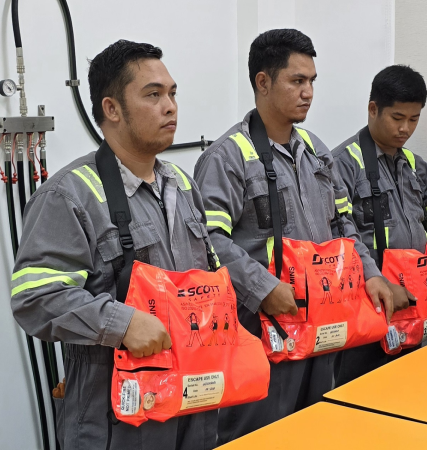
Basic H2S Training
The objective of the OPITO Basic H2S Training Course is to ensure that personnel working in environments where hydrogen sulfide (H2S) may be present are equipped with the knowledge and skills necessary to protect themselves.
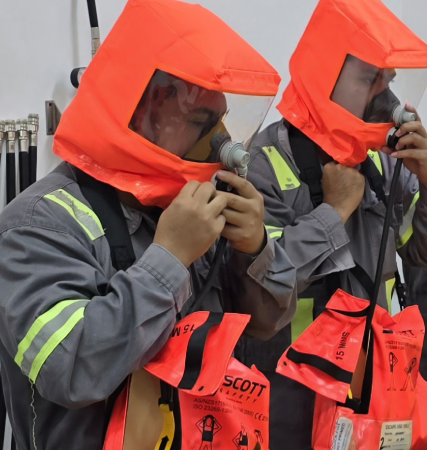
Basic H2S Theory Training
Objectives: This Product aims to ensure that the learner gains the required basic knowledge and understanding of the hazards and properties of H2S.
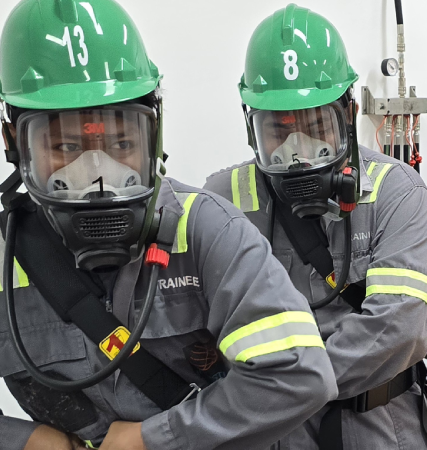
Basic H2S Practical Training
This Product aims to ensure that the learner gains the required basic knowledge and understanding of appropriate emergency response actions to take should a H2S related incident arise.

Dangerous Goods by Air (DGbA)
The objective of a Dangerous Goods by Air (DGbA) course is to provide participants with the knowledge and skills necessary to safely handle, package, mark, label, document, and transport dangerous goods by air in compliance with international regulations.
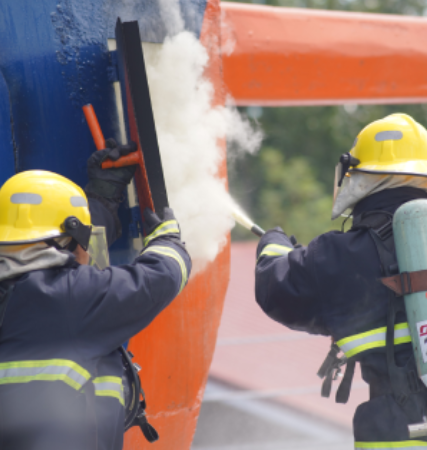
Helideck Emergency Response Team Member (HERTM) Initial
The objective of Helideck Emergency Response Team Member (HERTM) Initial Training is to provide participants with the skills, knowledge, and understanding required to respond effectively to helicopter and Helideck emergencies in an offshore environment.
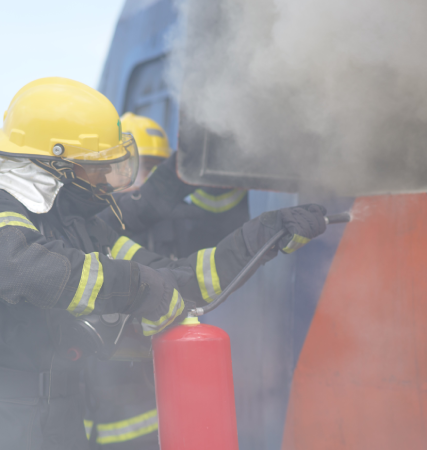
Helideck Emergency Response Team Member (HERTM) Further
The objective of HERTM (Helideck Emergency Response Team Member) Further Training is to refresh and enhance the skills, knowledge, and competencies of personnel who are part of a Helideck Emergency Response Team (HERT).
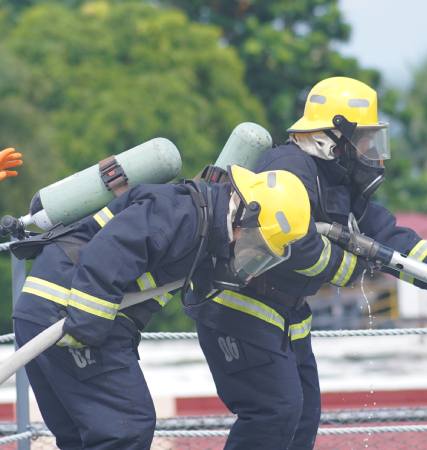
Helideck Emergency Response Team Leader (HERTL) Initial
The objective of Helideck Emergency Response Team Leader (HERTL) Initial Training is to provide the necessary knowledge, skills, and understanding to lead a team in responding effectively to helicopter and helideck emergencies on offshore installations.
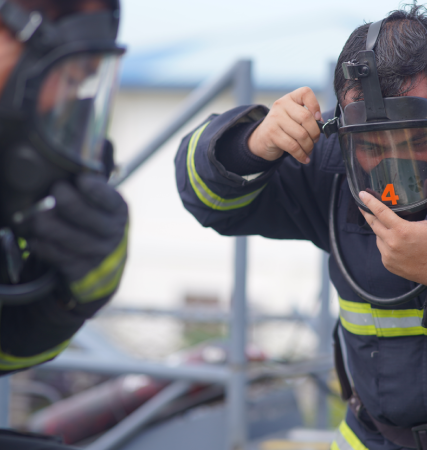
Helideck Emergency Response Team Leader (HERTL) Further
The objective of Helideck Emergency Response Team Leader (HERTL) Further Training is to provide participants who have previously completed initial HERTL training with the knowledge, skills, and confidence required to lead a Helideck Emergency Response Team in the event of an offshore helicopter emergency.
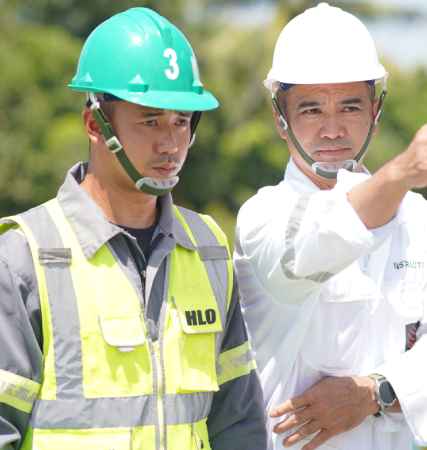
Helideck Operations Initial Training (HOIT)
The objective of a Helideck Operations Initial Training Course is to provide personnel with the knowledge, understanding, and skills required to perform their roles safely and effectively during helicopter operations in offshore environments.
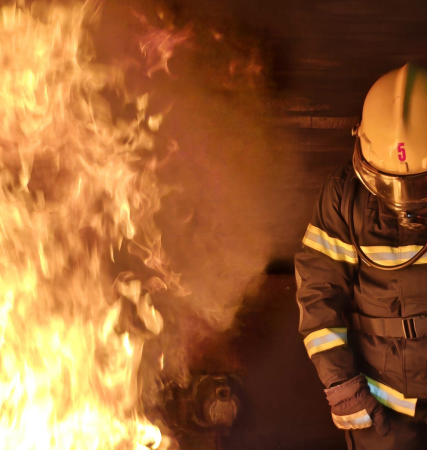
Offshore Emergency Response Team Member (OERTM) Initial
The objective of the Offshore Emergency Response Team Member (OERTM) Initial Training Course is to equip participants with the fundamental knowledge and practical skills necessary to function effectively as part of an emergency response team in offshore environments.
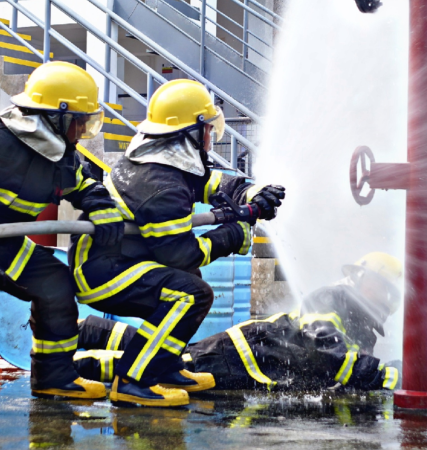
Offshore Emergency Response Team Member (OERTM) Further
The objective of the Offshore Emergency Response Team Member (OERTM) Further course is to provide participants with the knowledge and practical skills necessary to maintain their competence in responding to emergency situations offshore. This course is designed for individuals who have already completed the initial OERTM training and need to refresh their skills.
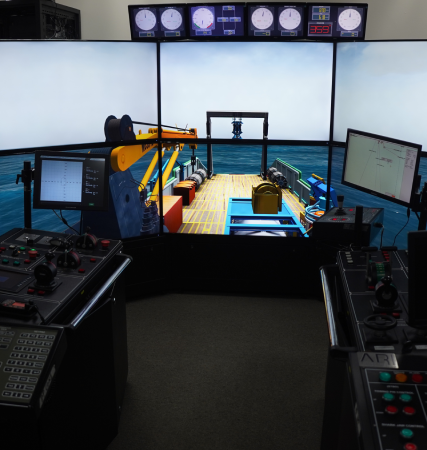
Dynamic Positioning (DP) Induction
The Dynamic Positioning (DP) Induction Course is the first phase in the training for becoming a certified DP Operator (DPO). The primary objectives of the course are to provide participants with an understanding of Dynamic Positioning systems and their operational principles. The course focuses on theoretical and practical knowledge necessary for safe and efficient DP operations.

Dynamic Positioning (DP) Revalidation
The objective of a Dynamic Positioning (DP) Revalidation Course is to ensure that certified DP operators maintain their competency and stay up-to-date with the latest industry standards, technologies, and best practices. This course is typically required for DP operators whose certification is expiring and need to revalidate their credentials.
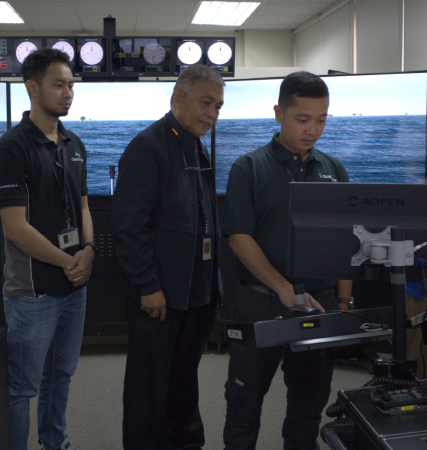
Dynamic Positioning (DP) Simulator
The objective of the Dynamic Positioning (DP) Simulator Course is to provide participants with advanced knowledge and practical experience in operating dynamic positioning systems. This course is typically designed for mariners and offshore personnel who aim to gain a higher level of competency in controlling and maintaining the stability of vessels equipped with DP systems, especially in complex and real-world operational environments.
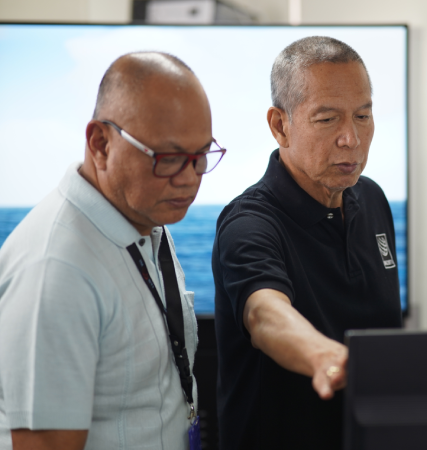
Dynamic Positioning Refresher
The objective of the Dynamic Positioning (DP) Refresher Course is to provide participants with an opportunity to refresh and update their knowledge and skills related to dynamic positioning operations. The course focuses on reviewing fundamental DP principles, operational procedures, and the use of DP systems, ensuring that participants are up to date with the latest industry standards and technological advancements.

Offshore Ship handling Course with Anchor Handling and Towing (OSCAHT)
The objective of an offshore shiphandling course with anchor handling and towing is to provide participants with the knowledge and practical skills required to safely and effectively handle vessels in offshore operations, specifically in the context of anchor handling and towing.
OPITO PRODUCTS
Basic Emergency Response

BOSIET with EBS
The BOSIET with EBS (Basic Offshore Safety Induction and Emergency Training with Emergency Breathing System) is a crucial course for offshore personnel. It aims to equip learners with essential safety and emergency response skills needed for offshore environments.

BOSIET with CA-EBS
The Basic Offshore Safety Induction and Emergency Training (BOSIET) with Compressed Air Emergency Breathing System (CA-EBS) course aims to provide offshore personnel with the essential safety skills and knowledge to work and respond effectively in an offshore environment.

BOSIET with EBS and TSbB
The objective of the BOSIET with Emergency Breathing System (EBS) and Travel Safely by Boat (TSbB) course is to equip personnel with essential safety knowledge and practical skills required for working in an offshore environment. This training aims to ensure the safety of individuals by preparing them to respond effectively in emergencies, especially in helicopter transit and marine transport situations.

T-BOSIET
The Tropical Basic Offshore Safety Induction and Emergency Training (T-BOSIET) course is designed to prepare individuals for offshore work, with a focus on tropical environments.

T-BOSIET with EBS
The Tropical Basic Offshore Safety Induction and Emergency Training (T-BOSIET) with Emergency Breathing System (EBS) course has several key objectives designed to prepare personnel for working in tropical offshore environments.

T-BOSIET with EBS and TSbB
The Tropical Basic Offshore Safety Induction and Emergency Training (T-BOSIET) with Emergency Breathing System (EBS) and Travel Safety by Boat (TSbB) course has several key objectives designed to prepare personnel for working in tropical offshore environments.

T-BOSIET with CA-EBS
The objective of the Tropical Basic Offshore Safety Induction and Emergency Training (T-BOSIET) with Compressed Air Emergency Breathing System (CA-EBS) is to provide personnel working in offshore tropical environments with the necessary knowledge and skills to respond effectively in emergency situations. The course focuses on safety induction, survival techniques, and the use of emergency equipment, with specific emphasis on CA-EBS.

FOET with EBS
The FOET with EBS (Further Offshore Emergency Training with Emergency Breathing System) course is a refresher program for offshore personnel who have already completed their BOSIET training. The course is designed to reinforce and update essential safety skills and emergency response procedures.

FOET with CA-EBS
The Further Offshore Emergency Training (FOET) with Compressed Air Emergency Breathing System (CA-EBS) course is designed to provide refresher training for personnel working in the offshore oil and gas industry. T

FOET with EBS and Travel Safety by Boat Initial
The FOET with EBS and TSbB (Further Offshore Emergency Training with Emergency Breathing System and Travel Safety by Boat) course is a refresher program for offshore personnel who have already completed their BOSIET training. The course is designed to reinforce and update essential safety skills and emergency response procedures.

T-FOET
The Tropical Further Offshore Emergency Training (T-FOET) course is designed for personnel working in tropical offshore environments who need to refresh and update their knowledge and skills in emergency response.

T-FOET with EBS
The Tropical Further Offshore Emergency Training (T-FOET) with Emergency Breathing System (EBS) course has several key objectives aimed at ensuring that offshore personnel can respond effectively to emergency situations in tropical environments.

T-FOET with EBS and TSbB
The Tropical Further Offshore Emergency Training (T-FOET) with Emergency Breathing System (EBS) and Travel Safety by Boat (TSbB) course has several key objectives aimed at ensuring that offshore personnel can respond effectively to emergency situations in tropical environments.

T-FOET with CA-EBS
The objective of the T-FOET (Further Offshore Emergency Training) with CA-EBS (Compressed Air Emergency Breathing System) course is to refresh and update offshore workers' skills and knowledge to safely respond to emergencies in offshore environments.

HUET with EBS
Objectives: The objectives of the Helicopter Underwater Escape Training (HUET) with Emergency Breathing System (EBS) course are typically focused on enhancing the safety and preparedness of personnel working in offshore environments.

HUET with CA-EBS
Objectives: The HUET (Helicopter Underwater Escape Training) with CA-EBS (Compressed Air Emergency Breathing System) course is designed to prepare personnel for emergency situations when traveling to offshore locations by helicopter.

T-HUET
The Tropical Helicopter Underwater Escape Training (T-HUET) course is designed to prepare offshore personnel for emergencies while traveling by helicopter to and from offshore installations in a tropical environment.

T-HUET with EBS
The T-HUET (Tropical Helicopter Underwater Escape Training) with EBS (Emergency Breathing System) course aims to equip offshore personnel with the necessary skills and knowledge to safely escape from a helicopter in the event of an emergency landing in water.

T-HUET with CA-EBS
The Tropical Helicopter Underwater Escape Training (T-HUET) with Compressed Air Emergency Breathing System (CA-EBS) course is designed to equip offshore workers with essential survival skills in case of a helicopter emergency over water.

Dry CA-EBS Initial Deployment
The objective of the Dry Compressed Air Emergency Breathing System (Dry CA-EBS) course is to equip participants with the knowledge and skills to effectively use a Dry CA-EBS in the event of an emergency.

Shallow Water CA-EBS
The objective of the Shallow Water Compressed Air Emergency Breathing System (CA-EBS) course is to equip participants with the knowledge and skills to effectively use a Dry CA-EBS in the event of an emergency.

Travel Safety by Boat (TSbB) Initial Training
The objective of a TSbB (Travel Safely by Boat) course is to provide participants with the necessary knowledge and skills to travel safely to and from offshore installations by boat.

Travel Safety by Boat (TSbB) Further Training
The objective of a TSbB (Travel Safely by Boat) Further Course is to reinforce participants with the updated knowledge and skills to travel safely to and from offshore installations by boat.

Basic H2S Training
The objective of the OPITO Basic H2S Training Course is to ensure that personnel working in environments where hydrogen sulfide (H2S) may be present are equipped with the knowledge and skills necessary to protect themselves.

Basic H2S Theory Training
Objectives: This Product aims to ensure that the learner gains the required basic knowledge and understanding of the hazards and properties of H2S.

Basic H2S Practical Training
This Product aims to ensure that the learner gains the required basic knowledge and understanding of appropriate emergency response actions to take should a H2S related incident arise.
Specialist Emergency Response

Dangerous Goods by Air (DGbA)
The objective of a Dangerous Goods by Air (DGbA) course is to provide participants with the knowledge and skills necessary to safely handle, package, mark, label, document, and transport dangerous goods by air in compliance with international regulations.

Helideck Emergency Response Team Member (HERTM) Initial
The objective of Helideck Emergency Response Team Member (HERTM) Initial Training is to provide participants with the skills, knowledge, and understanding required to respond effectively to helicopter and Helideck emergencies in an offshore environment.

Helideck Emergency Response Team Member (HERTM) Further
The objective of HERTM (Helideck Emergency Response Team Member) Further Training is to refresh and enhance the skills, knowledge, and competencies of personnel who are part of a Helideck Emergency Response Team (HERT).

Helideck Emergency Response Team Leader (HERTL) Initial
The objective of Helideck Emergency Response Team Leader (HERTL) Initial Training is to provide the necessary knowledge, skills, and understanding to lead a team in responding effectively to helicopter and helideck emergencies on offshore installations.

Helideck Emergency Response Team Leader (HERTL) Further
The objective of Helideck Emergency Response Team Leader (HERTL) Further Training is to provide participants who have previously completed initial HERTL training with the knowledge, skills, and confidence required to lead a Helideck Emergency Response Team in the event of an offshore helicopter emergency.

Helideck Operations Initial Training (HOIT)
The objective of a Helideck Operations Initial Training Course is to provide personnel with the knowledge, understanding, and skills required to perform their roles safely and effectively during helicopter operations in offshore environments.

Offshore Emergency Response Team Member (OERTM) Initial
The objective of the Offshore Emergency Response Team Member (OERTM) Initial Training Course is to equip participants with the fundamental knowledge and practical skills necessary to function effectively as part of an emergency response team in offshore environments.

